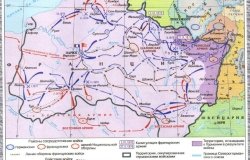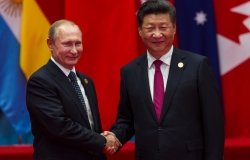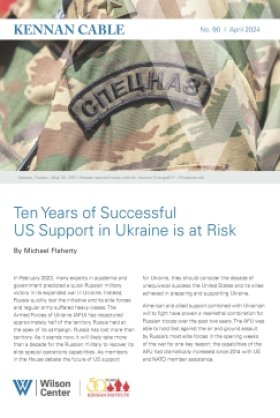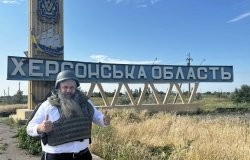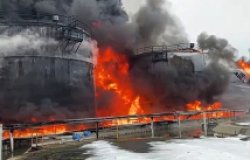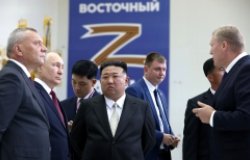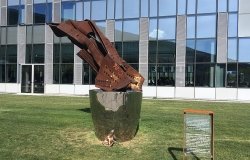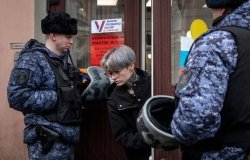Rethinking Russia and U.S.-Russian Relations: Russia's Role in the Global Economy
"In early August, 2008, Russian financial reserves combined with the Sovereign Wealth Fund reached about $600 billion," said Charles Ryan, Chairman of Deutsche Bank in Russia, at a 13 November 2008 seminar at the Kennan Institute chaired by Sarah Carey, Partner, Squire, Sanders, and Dempsey L.L.P. and Randy Bregman, Partner, Salans. "Today, in early November, things look much shakier."
How did Russia's fortunes in the global market change so quickly? Ryan traced Russia's integration into the global economic order in three phases. The first phase took place during the 1990s, when Russia aspired to integrate into global economic institutions. "They were great joiners," Ryan said. "They wanted to be in the G-8. They joined the IMF in the early 1990s. They joined the World Bank Group." The second phase, which Ryan terms "the loss of innocence," crystallized during Russia's WTO accession process. For example, Ryan contended, while it was inconceivable that Taiwan would have been allowed to join the WTO before China, Russia found itself asking Georgia and Ukraine for permission to join the WTO. "It is very instructive to think of how Russia feels if they are being treated less well than other global powers."
The third phase of Russia's integration developed in the later years of the Putin administration, when oil and commodity prices were rising, domestic consumption was on the rise, and Russians were feeling very confident. At this point, Ryan observed, the Russians decided that if they did not like the global economic system, they should try to change it. At the St. Petersburg economic forum in 2007, President Putin challenged the control the United States and Europe exercised over the World Bank and the IMF. "It was an attempt by the Russians to participate and to have a voice in shaping these institutions," Ryan said. At that point, Russia's confidence seemed to be backed up by its economic performance. Russia had amassed the third largest foreign currency reserves in the world. Foreign direct investment (FDI) in Russia over the first nine months of 2008 was already larger than FDI in all of 2007. In 2008, Russian fixed investment growth was approximately 22 percent. "It was the first time Russia had fixed investment growth similar to that of an Asian tiger," Ryan observed.
In 2008, however, Russia hit a wall. Ryan identified a series of "mini-shocks" that, in addition to declining energy prices, undermined confidence in the Russian market: veiled threats from then-President Putin concerning a metals company, the public feud between BP and the Russian shareholders of TNK-BP, and the war in Georgia and South Ossetia. "The most important effect of the oil price change and the difficulty with the war was undermining not just the confidence of foreign investors in Russia, but also the confidence of the Russian investors themselves," contended Ryan. Russians grew nervous about the stability of the ruble and capital outflows grew. As a consequence, banks stopped lending money, slowing the entire economy. In Ryan's view, the best indicator of the Russian economy is fixed investment growth: "It is going to fall from 22 percent in 2007 to just shy of 10 percent in 2008. And the best predictions we have now indicate it is going to go down to 5-6 percent in 2009. I think this is an indication that the economy is going to slow down."
The Russian response to the crisis by early November was to approve approximately $200 billion in various forms of support—which, in relative terms, is comparable to China's response to its own crisis, according to Ryan. The concern is that Russia had amassed its reserves in part because it lacked the institutions to allocate the funds without massive waste. "The institutions still have not been reformed, and now I think they have no choice," Ryan cautioned.
One component of the response plan was to buy stocks of state-owned enterprises (SOEs). Ryan pointed out that there is some political sensitivity over the stock market, since the Russian government had encouraged ordinary Russians to invest in certain SOEs. The government also extended loans to banks to spur renewed lending. Ryan observed that, as in the United States, the banks mainly used those funds to recapitalize themselves. The Russian state development bank, VEB, received $50 billion to make capital available to Russian companies with external liabilities. The goal of this fund was to prevent Russian holdings from reverting to Western banks making margin calls on over-leveraged Russian firms. At the same time, Russian oligarchs are not receiving government support to protect their foreign assets. The Central Bank is also expending billions in an attempt to defend the ruble, in part to maintain the population's confidence in the currency and the banking system.
Ryan predicted that Russia had sufficient reserves to get through 2009. "This suggests that Russia, like the United States, is potentially poised to come back a little more quickly from the crisis than Western Europe. Nonetheless, the situation in Russia will be much more difficult given the lack of well-developed institutions."
About the Author


Kennan Institute
The Kennan Institute is the premier US center for advanced research on Russia and Eurasia and the oldest and largest regional program at the Woodrow Wilson International Center for Scholars. The Kennan Institute is committed to improving American understanding of Russia, Ukraine, Central Asia, the Caucasus, and the surrounding region though research and exchange. Read more

